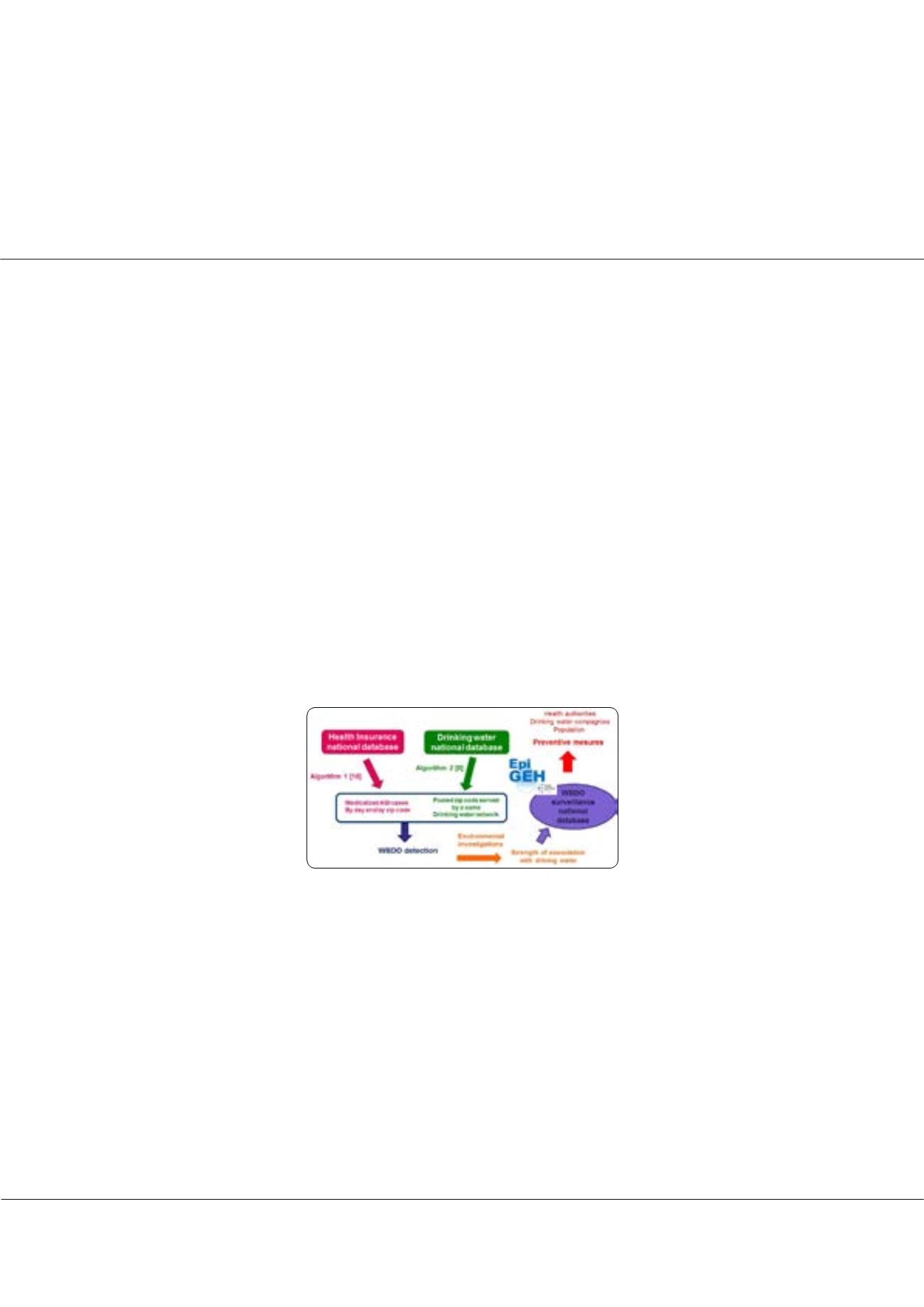

Page 52
conferenceseries
.com
Volume 8
Epidemiology: Open Access
ISSN: 2161-1165
Epidemiology 2018
September 17-19, 2018
September 17-19, 2018 | Rome, Italy
8
th
International Conference on
Epidemiology & Public Health
Waterborne disease outbreak surveillance system in France: Perspectives for nationwide surveillance
Damien Mouly, Clément Vix
and
Jérôme Pouey
French National Public Health Agency, France
O
utbreaks of infectious waterborne diseases are still a public health concern in developed countries [1-6]. France is also
concerned by WBDO occurrence [7, 8], but to date, because of the absence of a nationwide specific surveillance system,
the detection of these events is mainly based on the voluntary reporting of clusters of AGI by general practitioners to health
authorities. The number of WBDO is thus most likely underestimated. In this context, an integrated approach to detect WBDO
relying on the identification of medicalized AGI cases from the French health administrative database and drinking water
networks (DWN) from French ministry of health database was developed [9] and tested in a pilot study. Each detected outbreak
was investigated regarding environmental criteria during the days before the onset of the outbreak: results on bacterial water
monitoring, weather (e.g. heavy rain), technical incidents in the drinking water system (e.g. chlorination breakdown, alarm
malfunction). Sixty-seven potential WBDO were detected in 2014 and 2015 in the 7 french administrative districts of the
pilot study. The combined population served by a DWN implicated in a WBO during the period was 914,599 inhabitants.
Comparatively, only 2 WBDO had been detected and reported to the health authorities at the time of their occurrence. Four
levels of strength of association have been defined based on epidemiological and environmental criteria: Strong, probable,
possible and undetermined.The results of the pilot study highlight the public health utility of the implementation of a nationwide
WBDO surveillance system in France based on data routinely collected by the Health Insurance. A web-application, named
“EpiGEH”, was also developed to support the surveillance system. Such a specific surveillance system should help health
authorities to formulate recommendations regarding the management of drinking water systems and propose appropriate
preventive measures, in accordance with the water safety plans.
Figure:
Waterborne disease outbreak surveillance system
Recent Publications
1. Craun, G.F., et al., Causes of outbreaks associated with drinking water in the United States from 1971 to 2006. Clin
Microbiol Rev, 2010. 23(3): p. 507-28.
2. Hrudey, S.E. and E.J. Hrudey, Safe Drinking Water : Lessons from Recent Outbreaks in Affluent Nations. 2004, London:
IWA publishing. 486.
3. Pons, W., et al., A Systematic Review ofWaterborne Disease Outbreaks Associated with Small Non-Community Drinking
Water Systems in Canada and the United States. PLoS One, 2015. 10(10): p. e0141646.
4. Nazareth, B., et al., Surveillance of waterborne disease in England and Wales. Commun Dis Rep CDR Rev, 1994. 4(8): p.
R93-5.
5. Murphy, H.M., et al., A systematic review of waterborne disease burden methodologies from developed countries. J
Water Health, 2014. 12(4): p. 634-55.
6. Guzman-Herrador, B., et al., Waterborne outbreaks in the Nordic countries, 1998 to 2012. Euro Surveill, 2015. 20(24).
Damien Mouly et al., Epidemiology (Sunnyvale) 2018, Volume 8
DOI: 10.4172/2161-1165-C1-020
















